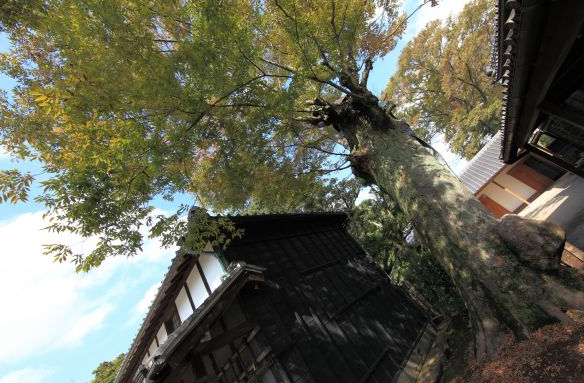Sycamores in NYC

In a bustling city like New York, the value of green spaces cannot be overstated. With their towering canopies and robust structure, Sycamore trees significantly enhance urban environments. Known for their resilience, beauty, and longevity, these trees are aesthetically pleasing and provide essential environmental and social benefits to the city. From improving air quality to providing much-needed shade in public parks and streets, sycamores are a natural solution to some challenges urban landscapes face. Key Takeaways: Sycamore Trees Improve Air Quality and Reduce Flooding: Sycamore trees’ large root systems and ability to absorb pollutants make them instrumental in managing urban stormwater and enhancing air quality, two critical environmental issues in NYC. Aesthetic and Social Benefits Create Community Spaces: Sycamores contribute to the beauty of NYC’s streets and parks, creating inviting, shaded areas for people to gather and enjoy. This promotes social interaction and enhances the livability of neighborhoods. Sycamores Offer Long-term Economic and Environmental Sustainability: These low-maintenance trees are an intelligent investment for NYC’s future. They provide lasting benefits for decades, making them an economically viable choice for city planners looking to enhance urban green spaces. Overview of Sycamore Trees Native to North America, the American sycamore tree (Platanus occidentalis) is well-known for its eye-catching look and environmental adaptability. Owing to their adaptability, these trees are frequently found in urban and rural environments, making them a well-liked option for landscapers and city planners. Description of the American Sycamore Tree American sycamores are easily recognizable by their towering height, often reaching up to 100 feet, and their large, wide-spreading canopies that provide ample shade. One of the most distinctive features of the sycamore is its bark, which flakes off in patches, revealing a patchwork of green, white, and tan underneath. This unique appearance adds to the tree’s aesthetic appeal, especially in city environments where greenery is often lacking. Native to North America As a native species, the sycamore has flourished in various conditions, from riverbanks to city streets. This adaptability makes it a resilient option for urban settings like New York City, where environmental stressors such as pollution, limited soil space, and fluctuating temperatures can challenge less robust tree species. Characteristics: Fast-Growing, Large Canopy, and Resilience Fast-growing: Sycamore trees are known for their rapid growth, making them an excellent option for cities looking to establish green spaces quickly. They can grow as much as 6 feet per year, rapidly filling public spaces and providing shade. Large Canopy: The expansive canopy of the sycamore offers a significant amount of shade, which helps cool down city streets and parks and reduces urban heat islands. This makes them ideal for creating calm, shaded spaces for residents to enjoy during hot summers. Resilient to Pollution and Climate Variations: One key reason sycamores are frequently chosen for urban environments is their resilience. Sycamores can withstand the heavy air pollution and compacted soil typical in metropolitan areas like New York City. They are also hardy enough to withstand weather conditions, from chilly winters to hot, muggy summers, making them a dependable option for an enduring urban tree. Environmental Benefits of Planting Sycamores Sycamore trees offer a variety of environmental benefits that make them a valuable asset in urban spaces like New York City. Their natural ability to improve air quality, manage stormwater, relax urban environments, and support wildlife directly addresses the major ecological challenges cities face today. Air Quality Improvement One of sycamore trees’ most significant environmental benefits is their ability to improve air quality. In a bustling metropolis like NYC, pollution levels can be high due to vehicle emissions, industrial activities, and other urban pollutants. Sycamores contribute to cleaner air by absorbing large amounts of CO2 during photosynthesis and trapping particulate matter such as dust, soot, and other airborne particles on their leaves. This filtration process helps purify the air and reduces the risk of respiratory illnesses for city dwellers. Pollutant Sycamore’s Role CO2 (carbon dioxide) Absorbed through photosynthesis PM2.5 (particulate matter) Trapped on leaves, reducing airborne particles Stormwater Management Urban areas like NYC are prone to flooding due to the large number of impervious surfaces, such as concrete, which prevent water from being absorbed into the ground. Sycamore trees, with their extensive root systems, are a natural solution to this problem. By absorbing significant amounts of rainwater, they reduce the load on the city’s drainage systems and lower the amount of stormwater runoff, thereby playing a pivotal role in preventing urban flooding and ensuring the safety of residents. Benefit Sycamore’s Impact Reduced stormwater runoff Absorption through large root systems Pressure on NYC’s stormwater systems Eased due to natural water absorption Cooling Effects The urban heat island effect, in which temperatures in metropolitan regions are much higher than in nearby rural areas, is common in cities. The concentration of roads, buildings, and other heat-absorbing and radiating structures is to blame. With their large canopies, Sycamores provide substantial shade that helps calm streets, parks, and sidewalks. By reducing the need for air conditioning in nearby buildings, these trees also lower energy consumption and decrease greenhouse gas emissions. Heat Island Issue Sycamore’s Contribution Elevated urban temperatures Canopy provides shade, reducing heat. Energy consumption for cooling Lowered due to reduced need for air conditioning Wildlife Habitat Sycamore trees are beneficial to humans and provide critical support to urban biodiversity. Their giant branches, hollow trunks, and broad leaves are habitats for various species of birds, insects, and small animals. For example, birds use sycamore branches for nesting, and insects find refuge in the crevices of their bark. These trees also provide seed balls and food for birds and small mammals. By fostering this biodiversity, sycamores help maintain a balanced urban ecosystem, offering ecological and aesthetic benefits. Wildlife Supported Sycamore’s Role Birds Nesting sites, food from seeds Insects Shelter within bark crevices Small mammals Food source, habitat Aesthetic and Social Benefits Aesthetic Appeal Sycamore trees are renowned for their striking appearance, making them a valuable addition to the visual landscape of New York City’s parks, streets, and public spaces. Their




